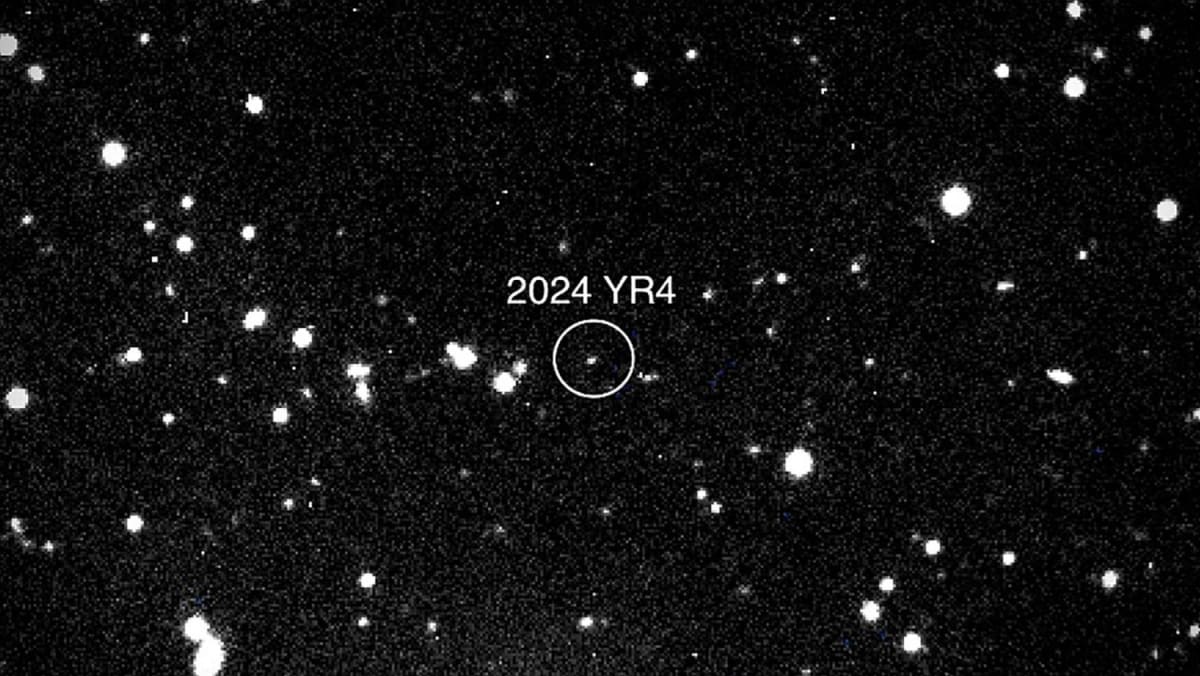Asia
China builds ‘planetary defence’ team as concerns grow over 2024 YR4 asteroid

China’s Emerging Role in Planetary Defence: A Proactive Approach to Countering Asteroid Threats
The Discovery of Asteroid 2024 YR4 and Its Implications
In late December, the University of Hawaii’s Institute of Astronomy made a groundbreaking discovery: an asteroid named 2024 YR4, estimated to be 40 to 90 meters in width, was identified as a potential threat to Earth. This discovery triggered global asteroid response mechanisms after its impact probability exceeded the international monitoring threshold. By early February, the European Space Agency (ESA) updated its odds of the asteroid hitting Earth in 2032 to 2.2 percent, placing it at the top of the agency’s risk list. While this probability may seem low, it is high enough to warrant immediate attention from the scientific community and space agencies worldwide.
The asteroid’s size and potential impact zone make it a serious concern. If it were to hit Earth, it could cause significant localized damage, especially if it strikes a populated area. According to Li Mingtao, a researcher at the Chinese Academy of Science’s National Space Science Centre, the asteroid could potentially destroy a medium-sized city, injuring tens of thousands of people if it impacts an urban area. This stark reality has prompted global efforts to monitor the asteroid closely and develop strategies to deflect or disrupt its trajectory.
China’s Proactive Response: Building a Planetary Defence Team
In response to the growing threat posed by near-Earth asteroids like 2024 YR4, China has taken a proactive stance by assembling a dedicated planetary defence team. A special projects centre under China’s State Administration of Science, Technology and Industry for National Defence recently posted a recruitment notice for three roles focused on asteroid monitoring, early warning systems, and defence strategies. The centre, which specializes in aerospace engineering and Earth observation, aims to bolster its capabilities in tracking and mitigating asteroid threats.
This move reflects China’s commitment to advancing its space science and technology infrastructure. As Li Mingtao emphasized, the country has made "great progress" in asteroid defence, particularly in designing innovative plans to protect Earth from potential impacts. By cultivating a team of experts dedicated to this field, China is positioning itself as a key player in global planetary defence efforts. The country’s conceptual plan for its first asteroid defence mission, unveiled in September, aims to observe and deflect a near-Earth asteroid by 2030, further demonstrating its ambition to contribute to worldwide safety.
Global Collaboration and Innovative Solutions
The challenge of asteroid defence is not one that any single nation can tackle alone. China is actively participating in international initiatives such as the International Asteroid Warning Network (IAWN) and the Space Mission Planning Advisory Group (SMPAG), which facilitate the sharing of information and coordinated responses to asteroid threats. These global partnerships underscore the importance of collaboration in addressing what is ultimately a shared vulnerability.
One of the most notable examples of successful asteroid deflection was NASA’s Double Asteroid Redirection Test (DART) mission in 2022. By deliberately colliding a spacecraft with an asteroid, NASA demonstrated that it is possible to alter an asteroid’s trajectory, providing a critical proof-of-concept for future planetary defence strategies. China is drawing inspiration from such innovations while also exploring its own approaches to asteroid monitoring and deflection.
The 2024 YR4 Asteroid: A Test Case for Global Readiness
The 2024 YR4 asteroid serves as a critical test case for the world’s readiness to handle asteroid threats. While its current impact probability is estimated at 2.2 percent, this number could change as scientists gather more data. By April, when the asteroid is no longer visible from Earth, researchers hope to have collected enough information to refine their predictions. Further observations in 2028 will provide even greater clarity, allowing the international community to determine whether a defence plan is necessary.
Li Mingtao has noted that while public concern about the asteroid is high, scientists remain relatively calm, as the situation is still unfolding. The asteroid’s path around the sun means it will be out of view for several years, giving the global community a critical window to prepare. If the asteroid’s trajectory remains a threat, the United Nations will convene to discuss potential defence strategies, highlighting the necessity of international cooperation in addressing such challenges.
The Broader Context: Why Asteroid Defence Matters
The discovery of 2024 YR4 has brought asteroid defence into the spotlight, but it is only one of many near-Earth objects that pose a potential risk to our planet. In 2013, a 20-meter-wide asteroid exploded over Chelyabinsk, Russia, injuring 1,500 people and damaging hundreds of buildings. This incident served as a stark reminder of the devastation that even a relatively small asteroid can cause.
As space agencies and researchers around the world work to identify and track near-Earth asteroids, the development of effective defence strategies becomes increasingly urgent. China’s growing involvement in this field is a testament to the global nature of the challenge and the need for collective action. By investing in asteroid monitoring systems, early warning methods, and innovative deflection technologies, nations like China are not only safeguarding their own populations but also contributing to the broader goal of protecting Earth from cosmic threats.
In conclusion, the discovery of asteroid 2024 YR4 has galvanized global efforts to enhance planetary defence capabilities. China’s proactive approach to assembling a dedicated team and developing new technologies reflects the country’s commitment to playing a key role in this critical area. As the international community continues to monitor the asteroid and refine its defence strategies, one thing is clear: the safety of our planet depends on collaboration, innovation, and a shared determination to counter the threats that lie beyond our atmosphere.











